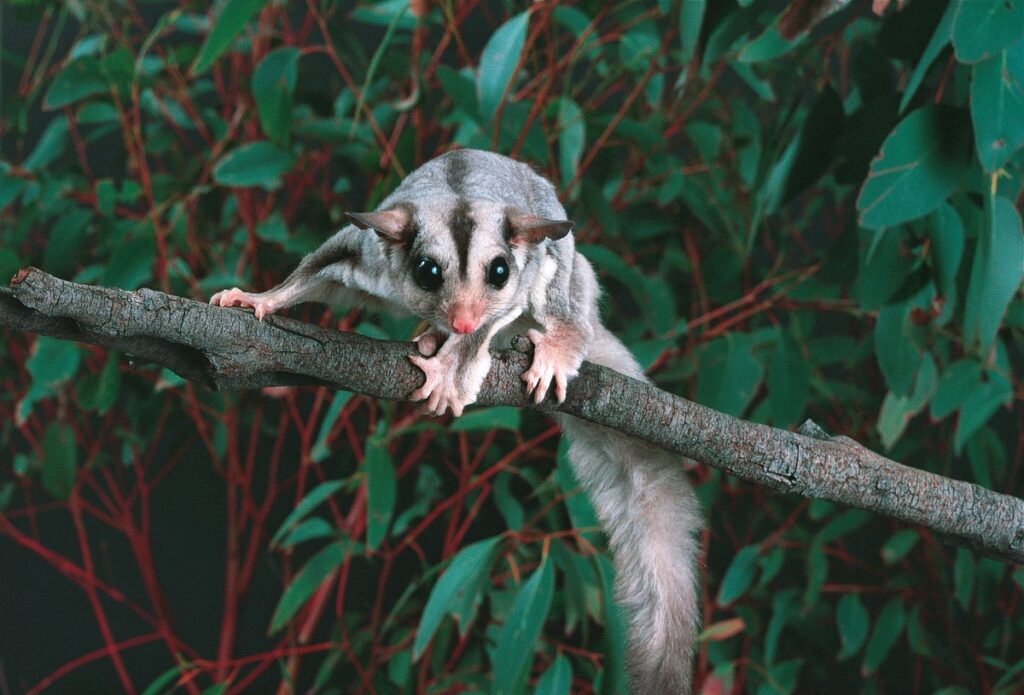
The sugar glider is a fascinating little marsupial native to Australia, and to learn about it one excellent source is the entry provided by the Australian Museum — a detailed profile of its natural history, behaviour and ecology. Australian Museum
Habitat & Distribution
According to the Australian Museum, the sugar glider (scientific name Petaurus breviceps) now occurs only in eastern Australia, specifically on the coastal side of the Great Dividing Range. Australian Museum Historically its range may have been broader, but recent taxonomic work indicates the “sugar glider” may comprise more than one species. Australian Geographic+1
Physical Characteristics & Gliding Ability
Sugar gliders are small and arboreal (tree-dwelling), with special adaptations for gliding: a membrane (patagium) extends between their wrists and ankles, allowing them to glide from tree to tree. Wikipedia+1 Their large eyes help them see at night, as they are nocturnal. The Australian Museum profile highlights that they sleep by day in leaf-lined hollows or nests in tree cavities. Australian Museum
Diet & Behaviour
The name “sugar glider” comes in part from their taste for sweet foods: sap, nectar, and gum from trees form a significant part of their diet. Australian Museum+1 Yet they are opportunistic omnivores too, taking insects and even small vertebrates when available. Accelerator Socially, they live in groups: the Australian Museum notes that up to seven adults plus their offspring may share a tree-hollow nest. Australian Museum+1
Conservation & Taxonomic Note
While traditionally the sugar glider was classified as “Least Concern”, new research shows that what was once thought to be one species is actually three distinct species (including the savanna glider and Krefft’s glider) with narrower ranges. Australian Geographic This means that the true sugar glider’s distribution is smaller than previously believed, and threats like habitat loss (especially of suitable tree hollows), fire, and fragmentation are becoming more serious. For example, conservation groups note that in urban-adjacent bushland its habitat is under pressure. Conservation Volunteers Australia
Why the Australian Museum’s Perspective Matters
The Australian Museum’s webpage gives a clear, reliable summary of the sugar glider’s habitat, behaviour and current status. It is valuable because it is Australian-based, focusing specifically on native fauna and updated with regional data. Using their information helps ensure we understand this marsupial in its natural context (not just as a novelty pet).
In Summary
The sugar glider is a small, agile, gliding marsupial native to eastern Australia, with remarkable adaptations for arboreal life, a social structure, and a diet partly based on sweet tree secretions. While it remains relatively well-known and loved, newer taxonomic work and mounting environmental pressures remind us that its well-being is not guaranteed. Learning about it via the Australian Museum helps us appreciate both its charming uniqueness and the importance of preserving its forest home.
If you like, I can pull up detailed videos or photos of its gliding behaviour, or examine its habitat requirements in high-detail. Would you like that?